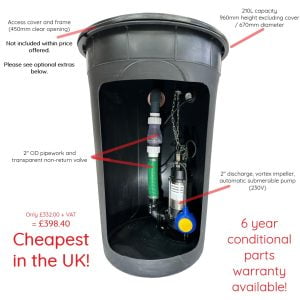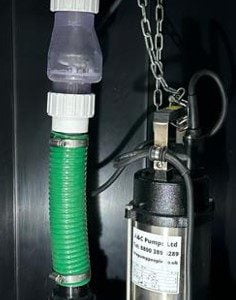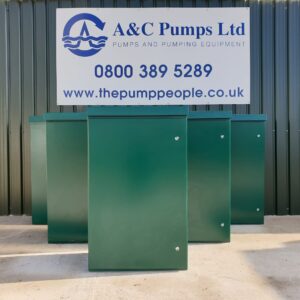Sewage Pumping Station
We provide a range of sewage pumping station for both domestic and industrial applications.
Sewage Pumping Station:
What is a Sewage Pumping Station?
A sewage pumping station, also known as a lift station, is a type of infrastructure used to transport wastewater or sewage from lower to higher elevations. These facilities typically consist of a large underground storage tank (wet well) that collects sewage from nearby residential, commercial, or industrial areas.
Once the sewage reaches a certain level in the wet well, the sewage pumping station’s pumps are activated and move the wastewater to a higher elevation, where it can then flow by gravity through a sewer network to the wastewater treatment plant. The pumps in a sewage pumping station can be electric or diesel-powered, and they are designed to handle large volumes of sewage.
Sewage pumping stations are an essential component of a city’s wastewater infrastructure, as they help ensure the proper disposal and treatment of wastewater, reducing the risk of environmental contamination and public health issues.

Who would need a Sewage Pumping Station?
A sewage pumping station may be needed in any area where the natural flow of wastewater or sewage is obstructed due to the topology of the terrain, the distance to the nearest wastewater treatment plant, or the level of the groundwater table.
For example, sewage pumping stations may be needed in urban areas where the population density is high, and the wastewater must be transported over long distances and uphill to reach the treatment plant. They may also be required in areas with low-lying topography or a high water table, where gravity cannot be relied on to transport wastewater.
Sewage pumping stations are commonly used in residential, commercial, and industrial areas that are not directly connected to a municipal wastewater system. They may also be used in large buildings, such as hospitals, shopping centers, and office complexes, to pump wastewater to the municipal sewer system.
Overall, any area that generates wastewater or sewage but cannot rely on gravity to transport it to the treatment plant may require a sewage pumping station.
There are both domestic and industrial sewage pumping stations.
Domestic sewage pumping stations are typically used in residential areas, such as individual homes or small neighborhoods, where gravity is not sufficient to transport wastewater to the municipal sewer system. These pumping stations are usually smaller in size and capacity, and they are designed to handle household wastewater, such as sewage from toilets, showers, and sinks.
Industrial sewage pumping stations, on the other hand, are larger and more complex, and they are designed to handle larger volumes of wastewater from factories, plants, and commercial buildings. These pumping stations may also be required to process and transport industrial wastewater, which can contain hazardous chemicals or pollutants that require specialized treatment.
The design and construction of domestic and industrial sewage pumping stations vary based on the specific needs and requirements of the location, the volume and type of wastewater generated, and the distance and elevation to the nearest wastewater treatment plant.









